(The customer's information and samples need to be kept confidential, this case only reflects part of the information)
For the analysis of the composition of unknown samples, multiple instruments and multiple spectrums need to be mutually verified to ensure the accuracy of the report.
Background of the project:
Drilling fluid fluid loss agent, also known as fluid loss agent, is an additive used to reduce the fluid loss of drilling fluid or the loss of liquid phase leakage into the formation. A customer provides fluid loss additives specifically for the drilling industry. When blending such fluid loss additives, a certain important raw material, polymer powder, is added. This polymer powder is white, in line with national environmental protection standards. This company entrusts us to do the component analysis of the polymer powder to see which substances are mixed and what the specific ratio is.
1. Testing environment:
Ambient temperature: 23.5 ℃; Humidity: 51% RH
2. Test samples:
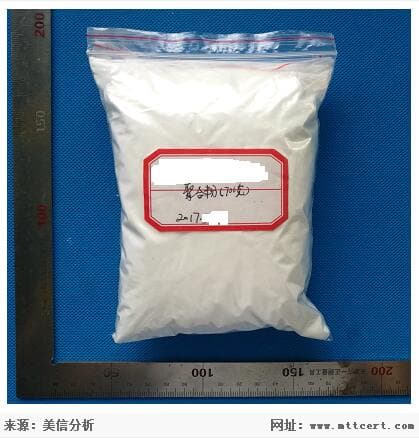
3. Testing equipment:
(Some devices in the report are not presented)
Device name | Device model | Calibration validity |
Fourier transform microscopic infrared spectrometer | Nicolet iN10 | April 10, 2018 |
Energy dispersive X-ray fluorescence analyzer | EDX-LE | November 13, 2017 |
Differential Scanning Calorimeter | DSC 214 | November 13, 2017 |
Thermogravimetric Analyzer | TG 209 F3 | November 13, 2017 |
XXXXXXXXX | XXXXXXXXXX | November 13, 2017 |
XXXXXXXXX | XXXXXXXXXX | November 13, 2017 |
Nuclear Magnetic Resonance Spectrometer | DRX-400 | November 13, 2017 |
XXXXXXXX | XXXXXXXXX | / |
4. Testing standards:
According to the sample, refer to multiple test standards (some standards in the report are not listed)
GB / T 32199-2015 General rule of infrared spectrum qualitative analysis technology
GB / T 19500-2004 General rules of X-ray photoelectron spectroscopy analysis method
GB / T 19466.1-2004 Plastic Differential Scanning Calorimetry (DSC) Part 1: General
ISO 11358-1-2014 Plastic polymer analysis method (TG) Part 1: General principles
5. Detection spectrum:

Sample FTIR test spectrum
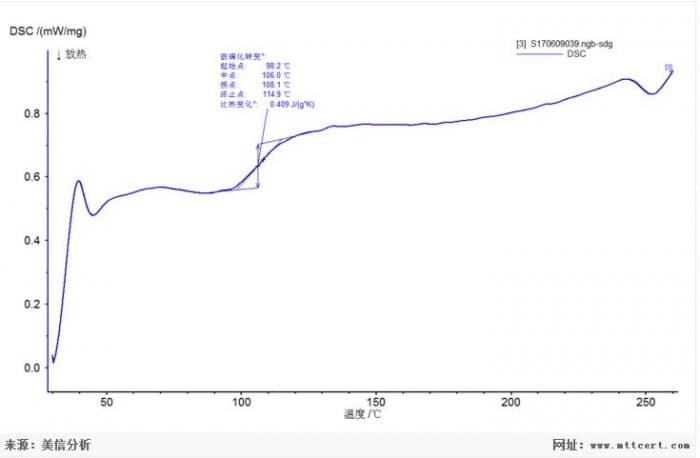
Sample DSC test spectrum
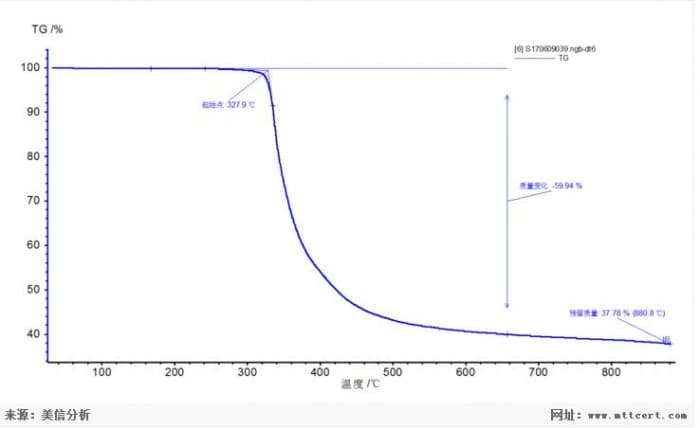
Sample TGA test spectrum
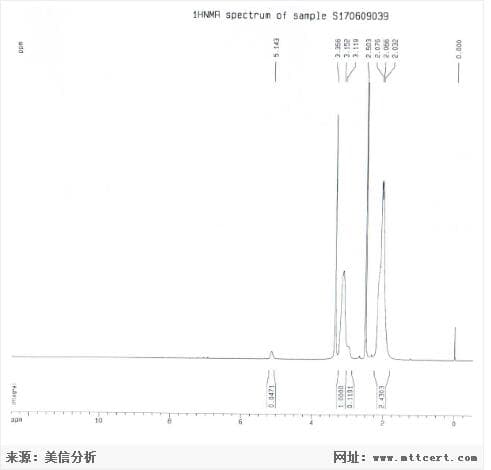
Sample 1HNMR test spectrum
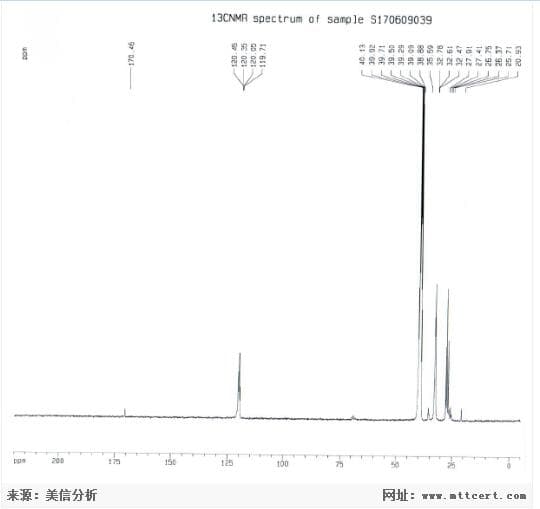
13CNMR test spectrum of sample
6. Test results:
Compound name | content(%) |
Hydrolyzed polyacrylonitrile | 100 |
Description: 1. The molar ratio of groups in hydrolyzed polyacrylonitrile is: -CN: -CONH2: -COOM = X: X: X, where M is Na + and Ca2 +, and the molar ratio is: Na +: Ca2 + = X: X ; 2. FTIR, DSC, TGA spectrum analysis, the sample is pure hydrolyzed polyacrylonitrile; 3. FTIR, 1HNMR, 13CNMR spectrum analysis, the groups in hydrolyzed polyacrylonitrile are -CN, -CONH2, -COOM. | |
MTT is a third-party laboratory engaged in the quality inspection, identification, certification and failure analysis services of materials and components.
Rectifier Diode(Standard Diode)
Rectifier Diode(Standard Diode) utilizes the unidirectional conductivity of the diode, which can convert the alternating current of alternating direction to a pulsating direct current of a single direction. Rectifier diode – diode designed for rectifying alternating current (mostly with low power frequency – 50 Hz at high power emitted during load). The main task of the rectifier diode is to convert AC voltage into DC voltage through application in rectifier bridges. The variant of rectifier diodewith the Schottky barrier is particularly valued in digital electronics.
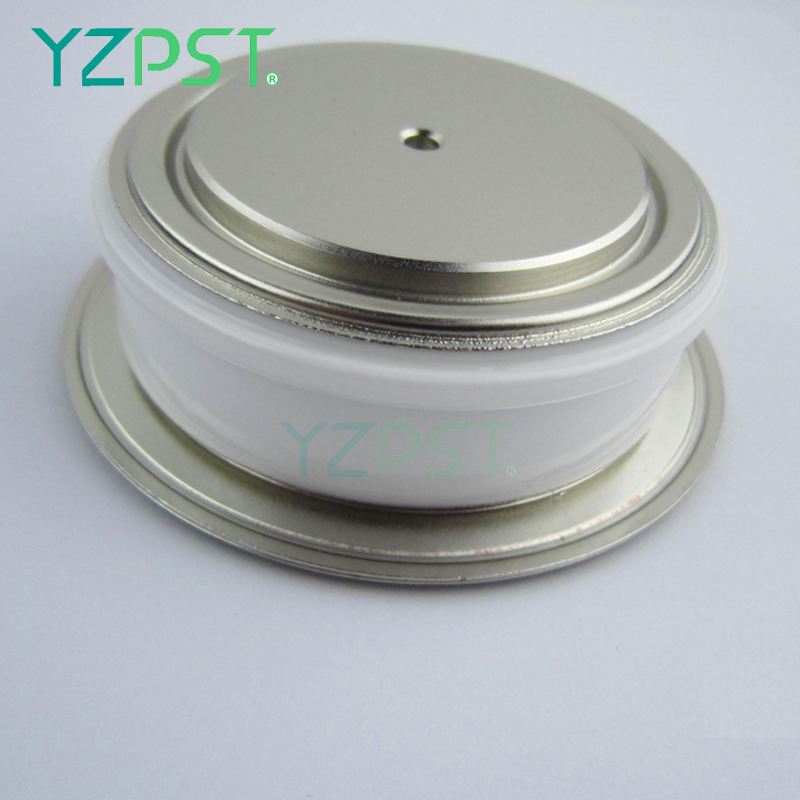
Rectifier Diode,Standard Diode,High Power Rectifier Diode,High Voltage Rectifier Diode
YANGZHOU POSITIONING TECH CO., LTD. , https://www.cnpositioning.com